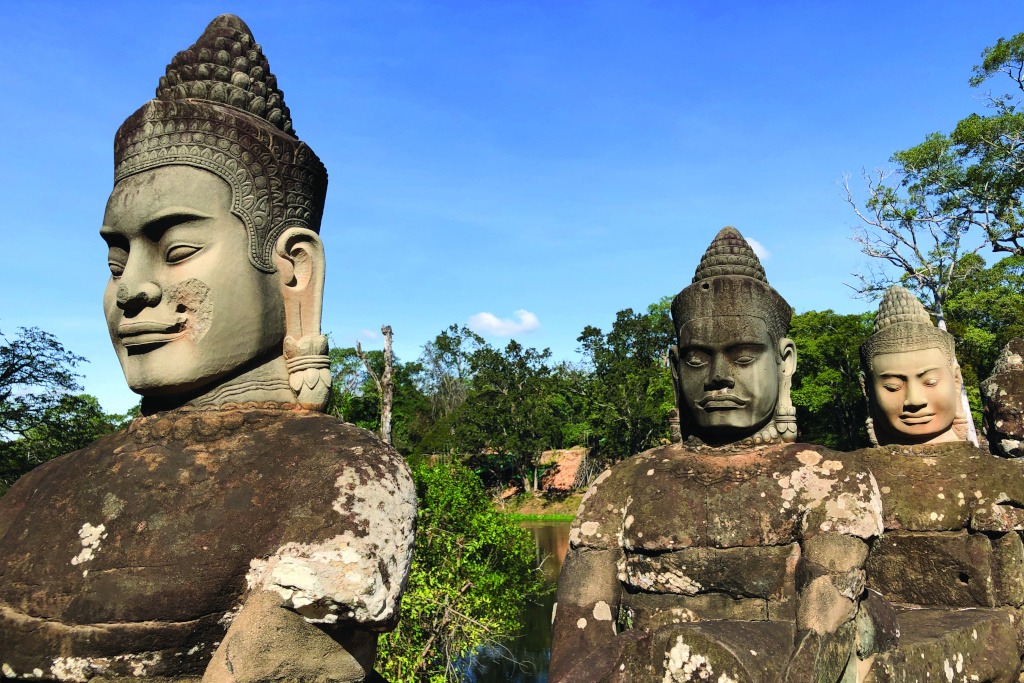When I mentioned that my partner and I were off to Siem Reap, Cambodia for vacation, a surprising number of our friends wondered “Where?” “Angkor Wat,” I’d reply not quite accurately, at which point some would say “Aah!” and nod in recognition. The intricately designed towers of that celebrated temple, resembling pine cones carved in stone, are to Cambodia what the domes and minarets of the Taj Mahal are to India: architectural symbols of national pride. In a country that has struggled its way through colonialism and brutal civil war, Angkor Wat, which dates back to the 1100s, serves as a symbol of the Cambodian people’s resilience over the centuries. But while Angkor Wat, along with dozens of other magnificent and mysterious Khmer ruins, is what lures most travelers to Siem Reap, the town deserves to be celebrated for much more than its headline attractions.

By day, geckos are a common sight all over Siem Reap. At night, they’ve been known to make like moths, attracted to the warmth of hanging lanterns.
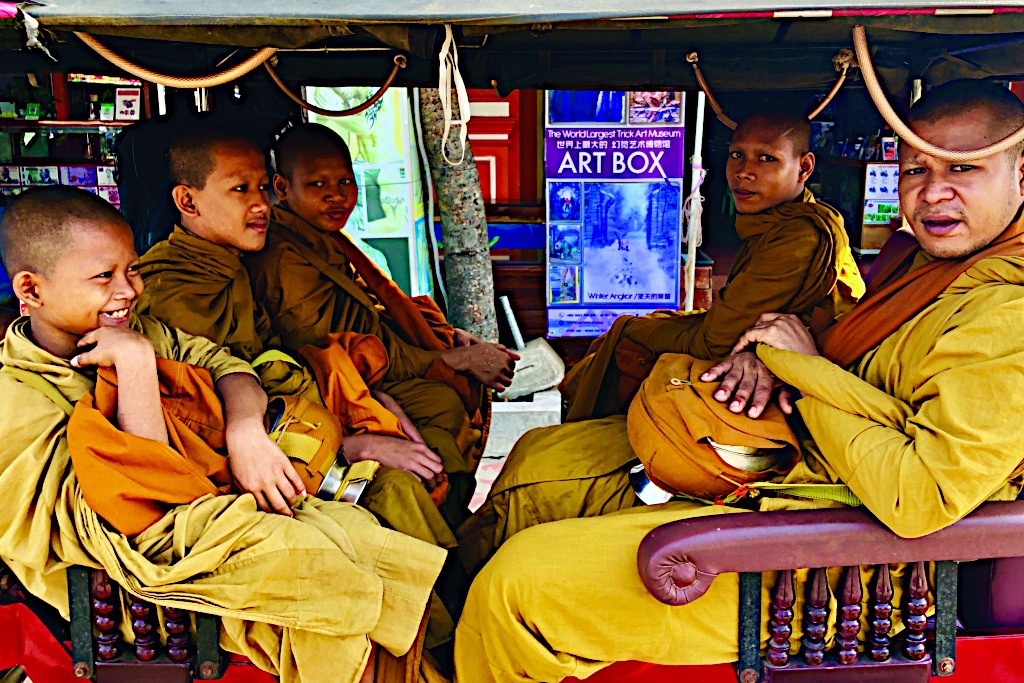

Buddhist monks are ever-present in Siem Reap, not just at temples and monastery grounds, but shopping in the marketplaces and traveling by motorcycle-pulled tuk-tuks, the preferred mode of public transit.
We spent six busy days and nights in this low-slung city along the banks of the river that shares its name. On our first evening, we took in the colored lights of a night market reflecting on the water, as vendors gathered along pathways and footbridges selling snacks and handicrafts. Enormous iron pans sizzled as as lort cha (a traditional dish of short, chubby rice noodles, beef and chives) was stir-fried to order, then served up with a tangy red chili sauce with more sweet than heat. Fried egg on top? Yes, please!
Street food not your speed? Hop on a brightly colored, threewheeled tuk-tuk for a ride to the Khmer Grill. On a busy corner
with a patio perfect for people watching, wisecracking Englishspeaking servers dish-up some of the city’s best amok, a fragrant fish soup made with coconut milk, garlic, and a fistful of fresh herbs. You’ll spend less than $10 for dinner, and you’ll spend it in US dollars, which are the preferred currency throughout Cambodia, and are even dispensed by ATMs, making Siem Reap all the easier for American travelers to navigate.
The freshwater fish in our amok surely was caught early that morning in nearby Tonlé Sap Lake where, one day, we took a
boat ride through a village of houses built on stilts to avoid the seasonal rise of the water. Acres of flooded land on the lake’s banks are dense with trees with submerged trunks. In a dugout canoe rowed by a local, we glided beneath the canopy, dappled with sunlight. At a makeshift visitor center on an elevated pier, we gazed out over the treetops, then watched queasily as whole chickens were tied to long poles, then suspended over a pen of hungry, snapping crocodiles
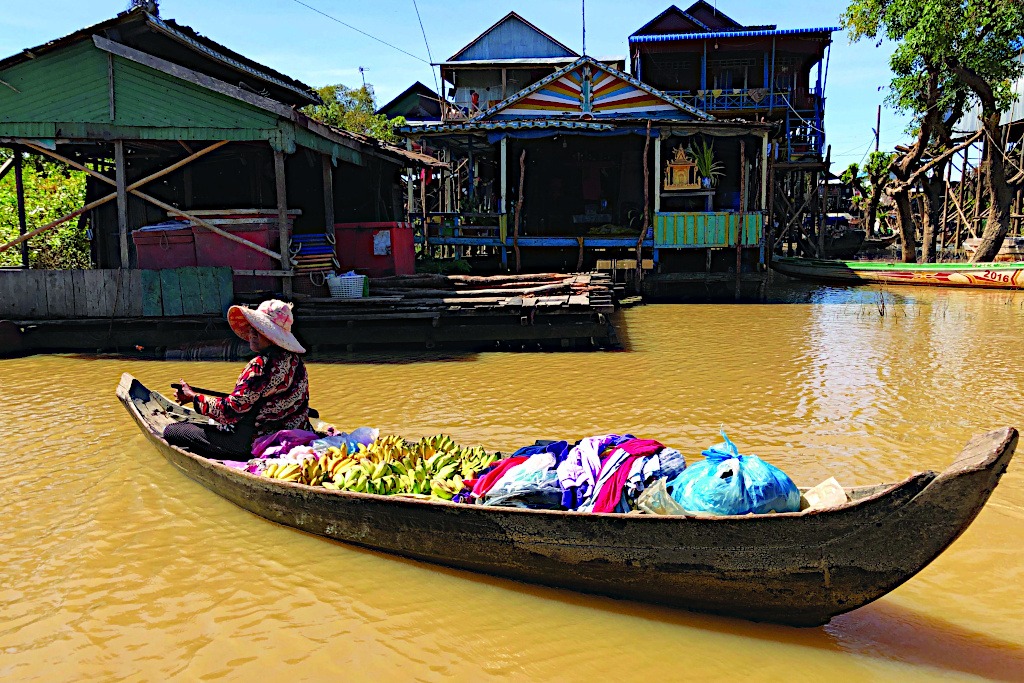

Along the shore of Tonlé Sap Lake, the houses of small fishing villages float on pontoon-like foundations or stand atop high wooden stilts. Deliveries are made and errands run via dugout canoe.
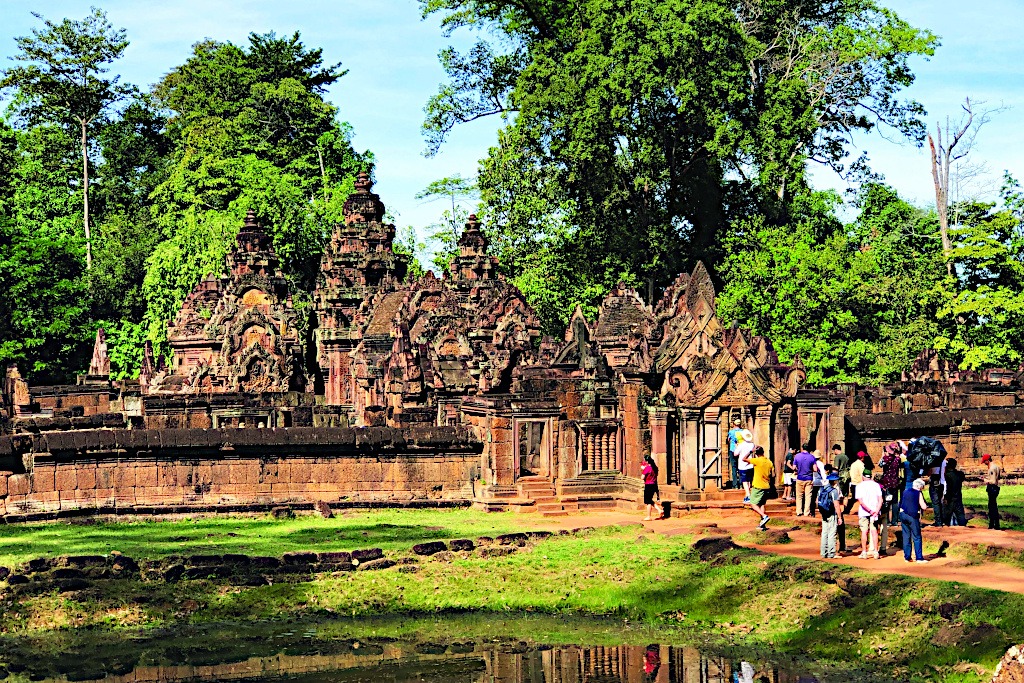

One of the only temples around Siem Reap commissioned by a private citizen rather than royalty, Banteay Srei which dates back to the first century AD, has elaborate carvings on virtually every one of its pink stone surfaces.
Lining the road back to town, dozens of straw-hatted women sell hollow lengths of bamboo that have been filled with sweetened, salted sticky rice flecked with black beans, then roasted over a fire. Peel back a strip of the woody bamboo and dig a finger in to sample this utterly rustic snack.
Samouern, our government-certified driver guide, was a former Buddhist monk, who shared stories about his childhood near the Cambodia-Laos border and tales of his father’s harrowing experiences during the reign of Pol Pot’s Khmer Rouge. For $40 a day, he escorted us to crumbling off-the-beaten-track temples nearly engulfed by jungle trees, a waterfall-fed swimming hole, and a giant reclining Buddha carved on the top of a two-story-high boulder that we climbed wooden gangways to reach. (Guides can easily be hired through hotel desks, online, or tourist-information sites in town.)
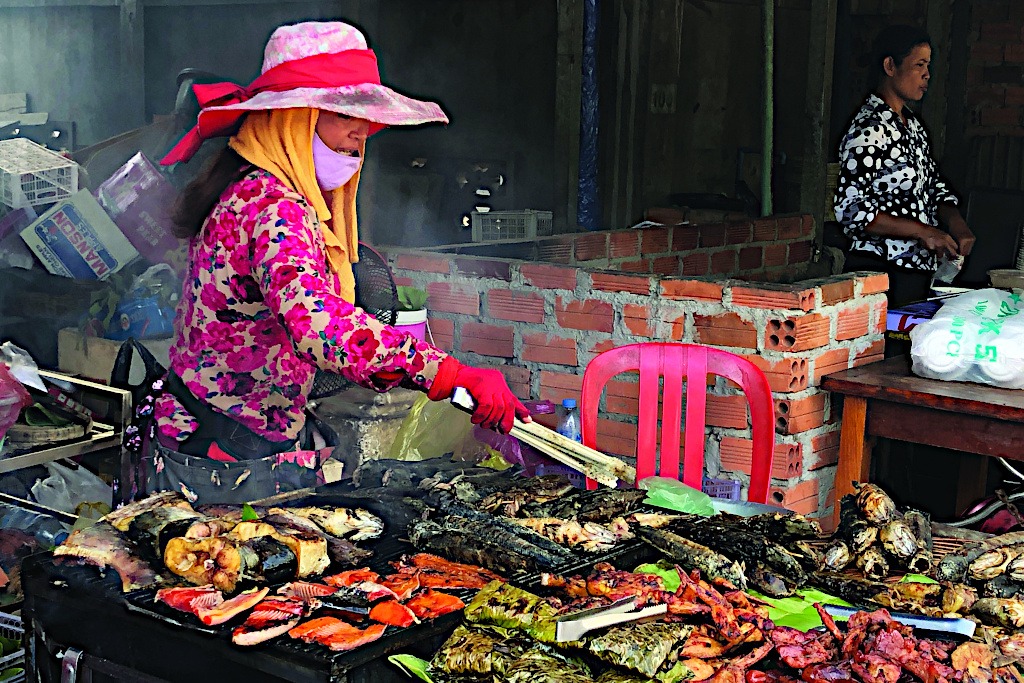

At small streetside markets, fresh meat and produce are available for purchase. Pre-cooked dishes are also available to take away and eat at home.
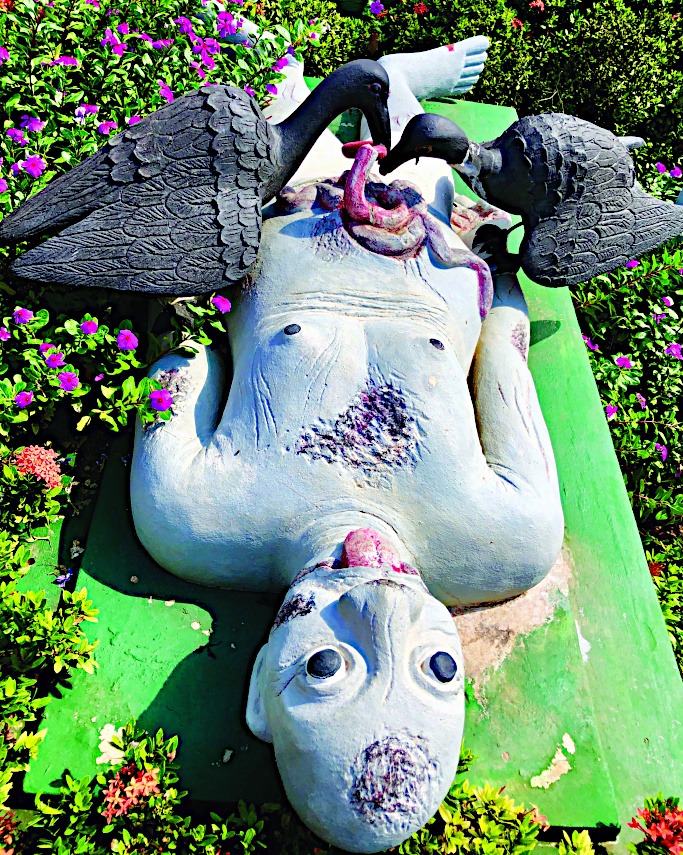

The riverside Wat Preah Prom Rath Pagoda is a 20th century temple complex in central Siem Reap town. Among its garden statuary is this depiction of a traditional Tibetan Buddhist sky burial, in which the bodies of the dead are offered to sacred vultures.
At night, we meandered down the town center’s famous pub street, a two-block stretch of lively bars, restaurants, and clubs. It’s touristy, but relatively few of the tourists are American, and we enjoyed the opportunity to chat with friendly Asian and Australian visitors over beers. Tucked a couple alleys away was Miss Wong’s, a swanky gay-owned retro-Shanghai speakeasy Siem Reap even has two cheerful gay bars—Heaven and Barcode—both of which feature kitschy drag shows. (Homosexuality is legal in Cambodia and LGBT issues are part of the national public school curriculum.)
For more unique and creative entertainment, we spent our last evening at Phare, Siem Reap’s famous Cambodian rock-and-roll circus show, with great live music, stunning male acrobats, and a female archer who stood on her hands and worked bow and arrows with her feet.
Truly, Angkor Wat is just the beginning of Siem Reap’s eclectic treasures and attractions, some of which we captured in the
photographs featured here.
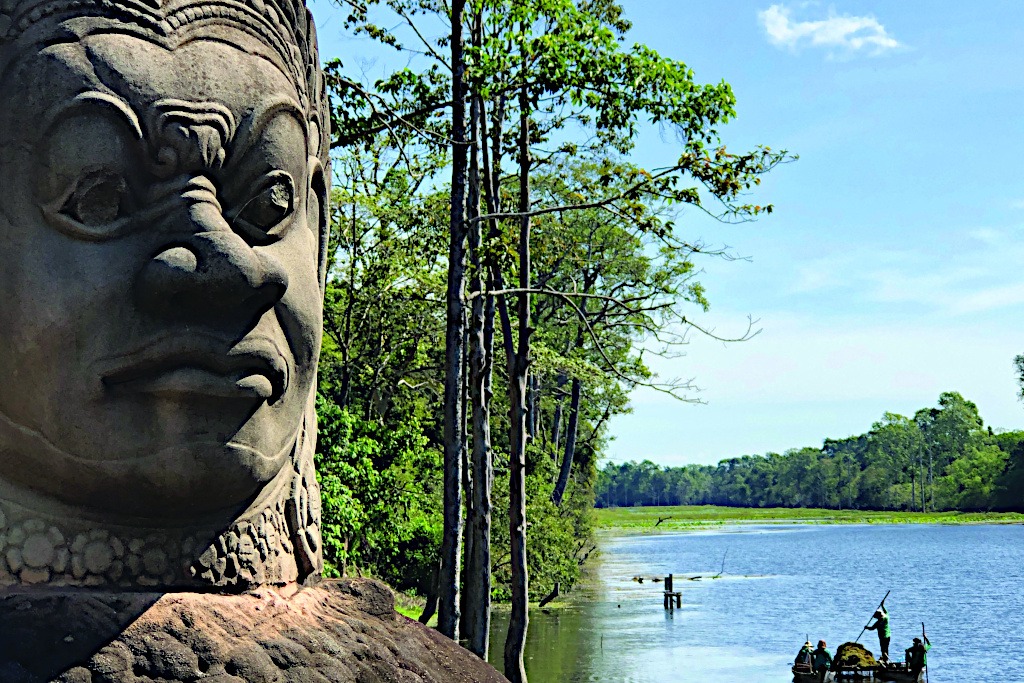

Giant stone heads line the approach to the south gate of Angkor Thom, the last capital of the Khmer Empire. On one side of the walkway, grimacing faces represent demons; while on the other, placid determination characterizes the faces of the gods.
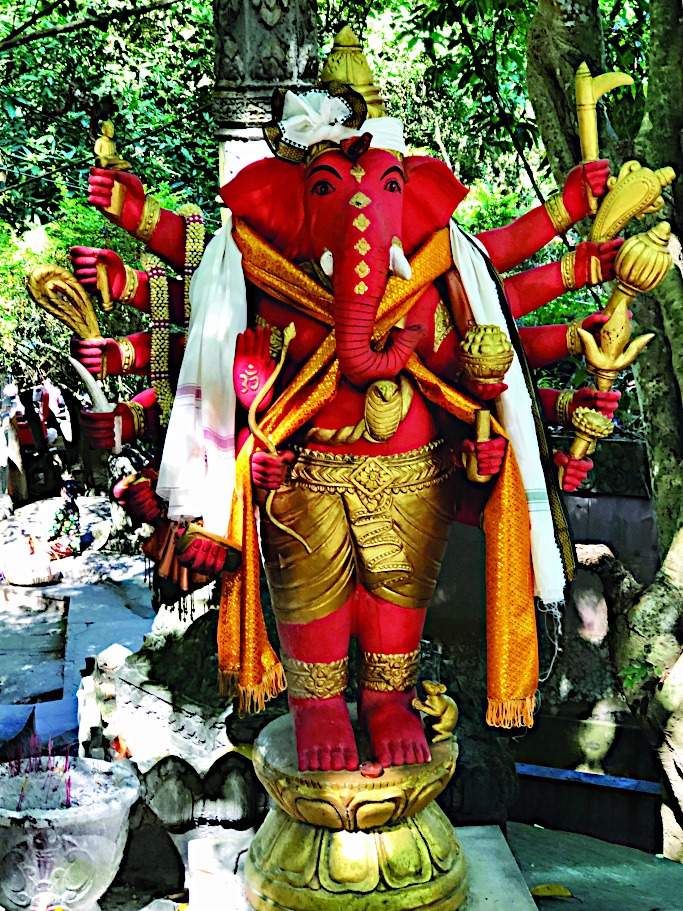

This cheerful representation of the Hindu god Ganesh stands among the temples and shrines atop Phnom Kulen, a holy mountain an hour from Siem Reap. The nearby waterfall was featured in the Tomb Raider movie.
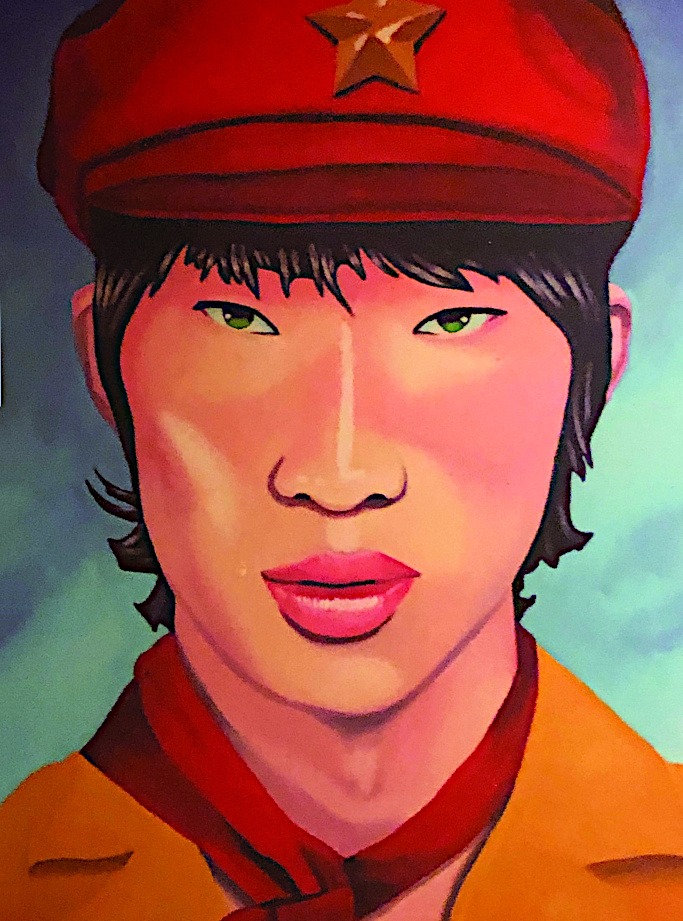

A kitschy, homoerotic spin on Mao-era China defines the art on display at Miss Wong’s, a speakeasy-style cocktail lounge on a quiet alley in Siem Reap town owned by Dean Williams, a gay New Zealander.


